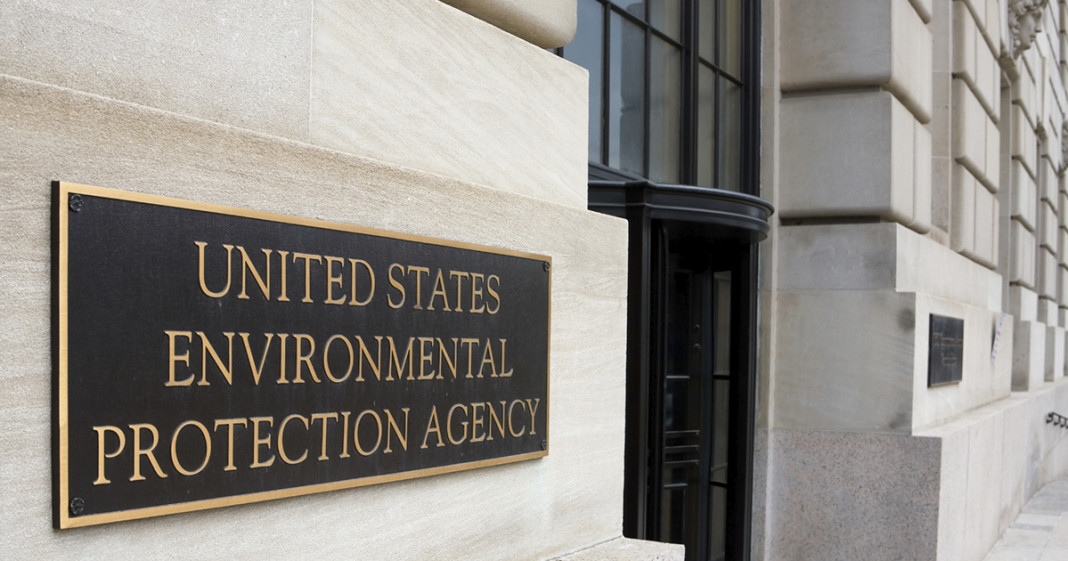Under federal statute, government agencies such as the Environmental Protection Agency (EPA) are not allowed to engage in lobbying and the spread of propaganda, particularly on the taxpayer’s dime. Nonetheless, according to a recent ruling by the Government Accountability Office (GAO), this is exactly what the EPA did.
The GAO ruling comes in the wake of a report on EPA practices that appeared in the New York Times. That ruling found that the EPA had engaged in “covert propaganda” in violation of federal law when it conducted a social media campaign, urging the public to weigh in on a new rule that would have provided more stringent protection over more of the nation’s waterways.
The Obama Administration issued the new rule last summer in an effort to expand EPA protections to rivers and their tributaries – including small streams and wetlands from industrial polluters. Not surprisingly, the corporate GOP has fought the rule every inch of the way, calling it “government overreach” and claiming it would regulate even minor puddles and irrigation ditches.
According to administration officials, the new rule would clarify which small waterways and tributaries would be subject to protection against industrial polluters and developers. According to EPA head Gina McCarthy, only waterways with “direct and significant” connections to major downstream rivers and lakes already under EPA protection would fall under the jurisdiction of the new rule. At the time, former House Speaker John Boehner said it would send “landowners, small businesses, farmers and manufacturers on the road to a regulatory and economic hell” as well as cause the loss of jobs.
Despite assurances that the new water rule was “grounded in law and the latest science…shaped by public input, does not create any new permitting requirements for agriculture and maintains all previous exemptions and exclusions,” thirty-one states filed a lawsuit in order to have the law overturned. A federal judge in North Dakota blocked implementation of the rule last August.
That “public input” is now the bone of contention. In order to get public feedback over the rule, the EPA launched a massive social media campaign, using Twitter, Facebook and YouTube. In addition, the campaign employed a “crowdspeaking” tool, known as Thunderclap. This allows individual and organizations to recruit large numbers of people in order to spread a message, who then share that message all at once. In this case, the message was: “Clean water is important to me. I support the EPA’s efforts to protect it for my health, my family and my community.”
Apparently, it was in its use of the latter in which the EPA crossed the line from educating and informing to lobbying. According to the GAO, that message was “covert propaganda,” because recipients might not have been aware that it had been composed by the EPA. Another way in which the agency ran afoul of the law was to publish blog posts linking to the web pages of the Natural Resources Defense Council and the Surfrider Foundation. On those pages, readers were urged to contact their legislators and encourage them to support the new water rule.
In addition to lobbying, the EPA is also accused of spending government funds that have not been appropriated for a given purpose.
Of course, pro-corporate, anti-environment right wing politicians are beside themselves with joy. Delusional Oklahoma Senator James Inhofe, who (despite his anti-environmental stance) chairs the Senate Environment and Public Works Committee, was gleeful when he said, “[The] GAO’s finding confirms what I have long suspected, that [the] EPA will go to extreme lengths to promote its activist environmental agenda…[including] illegal attempts to manufacture public support for its Waters of the United States rule and sway congressional opinion.”
It’s not the first time a government agency has gotten in trouble over the anti-propaganda issue. In 2004, the Centers for Medicare and Medicaid Services were found to have violated the law by secretly paying for videos which were then distributed to television broadcasting stations without disclosing their government funding. A year later, the Department of Education was similarly caught “dead to rights” when it was discovered that it had hired a public relations firm to promote the infamous “No Child Left Behind” Act.
This is the first time such a violation has involved the use of social media, however. In a statement issued to the Associated Press, the EPA responded: “We maintain that using social media to educate the public about our work is an integral part of our mission…We use social media tools just like all organizations to stay connected and inform people across the country about our activities.”
Arguably, the use of social media is largely uncharted territory for government agencies, although politicians such as President Obama and current Presidential candidate Bernie Sanders have been employing it very effectively for some time. It is possible that the EPA overstepped its “official” bounds by using government social media accounts in order to promote its “agenda” of keeping our drinking water free from polluters, although the EPA continues to deny this.
In the end, considering that humans die within a few days without access to clean water, it seems – as the Bard of Avon would put it – “much ado about nothing” The real agenda is that of anti-environment GOP lawmakers who would gladly sacrifice human health and life itself rather than risk imposing even the smallest regulatory burden upon the rich and powerful corporations and individuals who have bought and paid for them.



![Senator Schumer: “Single Payer [Health Care] is On The Table”](https://sandbox.trofire.com/wp-content/uploads/2017/07/Universal-Healthcare-218x150.jpg)
